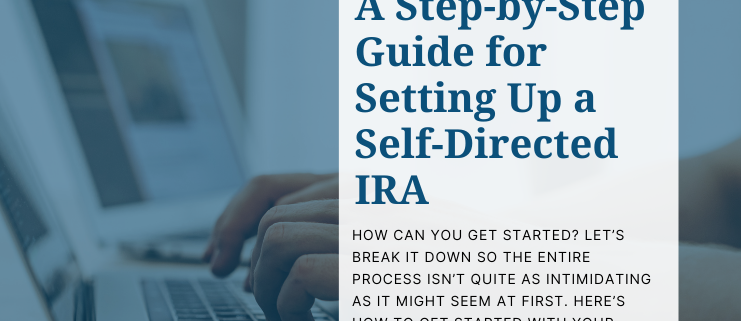A Step-by-Step Guide for Setting Up a Self-Directed IRA
Getting started with a Self-Directed IRA means you’re ready for a completely new way to invest. You’re not concerned with what traditional brokers can offer you. You’re concerned with what’s available. And with a Self-Directed IRA, you’ll have access to more asset types: real estate, precious metals, and more. So how do you get up with an account like this? How can you get started? Let’s break it down so the entire process isn’t quite as intimidating as it might seem at first. Here’s how to get started with your Self-Directed IRA:
Select the Type of Self-Directed IRA Account
Your first step should be to evaluate what you’re working on for retirement. What kind of account will you hold? Although it might be easy to select a 401(k) account with an employer because that’s all they offer, you’ll have to choose from a full range of options here.
A Traditional IRA, for example, lets you invest pre-tax money into your account. A Roth IRA lets you invest post-tax money, which doesn’t generate you tax savings in the short-term but does let you save in the long-term. There are also SEP IRAs and Solo 401(k) plans for business owners—and these offer might higher contribution limits. Ultimately, it’s about choosing what you want to work with in your retirement account. Consult with a financial professional to see what works best for your situation.
Choose an Investment Strategy
Now that you know what kind of account you want to work with, it’s time to ask what you’re going to house in that account. Will you keep real estate in your account? Precious metals? Let’s look at a few of the options you have here:
- Real estate is handy for allocated money into an asset class that doesn’t necessarily correlate with the stock markets. It can also earn you income into the IRA via a property manager if you rent it out.
- Gold and precious metals are tangible assets that can offer a lot of security through your account.
- Private loans can generate high amounts of interest, which is a way to beat high interest rates in the market.
- Tax liens can be nontraditional ways to store money and secure your assets.
Fund Your Account
Of course, nothing happens until there’s something in the account. Here at American IRA, we like to highlight a few ways you can fund your account. For starters, there’s a transfer—simply using an old account and transferring the money to a like account with a different broker. For example, let’s say you have a Roth IRA with one company and want to transfer it to another. It’s easy to move the funds fairly directly between the two because there won’t be any taxable events here.
You can also roll over funds, which means that you’re likely changing account types. This can potentially create a taxable event if you’re not careful. Additionally, there’s always the option of simply making contributions to your account once you set it up—it’s the slow method, but sometimes, it’s all investors have.
Setting up a Self-Directed IRA opens up a world of investment opportunities beyond what traditional brokers can offer. By following these steps, you can take control of your retirement portfolio and diversify with a variety of asset types like real estate, precious metals, and more. Start by selecting the right type of account for your needs, choose an investment strategy that aligns with your goals, and fund your account using transfers, rollovers, or direct contributions. It’s that easy.
While the process may seem daunting, breaking it down into manageable steps makes it much more approachable. Interested in learning more about Self-Directed IRAs? Contact American IRA, LLC at 866-7500-IRA (472) for a free consultation. Download our free guides or visit us online at www.AmericanIRA.com.





